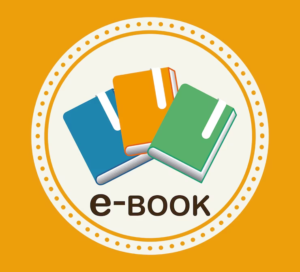Ultimate How to Publish a Book Guide 2024
Key Takeaways
- Unlock the secrets of modern publication and identify the best route for your book.
- Equip yourself with strategies for crafting a manuscript that stands out in a crowded market.
- Gain a step-by-step understanding of the essential phases involved in bringing a book to life.
- Analyze the benefits and drawbacks of partnering with literary agents versus walking the self-publishing route.
- Learn the financial intricacies of publishing and how to make economically sound decisions for your project.
- Discover marketing techniques that elevate your book’s visibility and cater to the digital age readership.
- Comprehend the legal procedures that protect your work and ensure your rights as an author are secure.
Understanding the Modern Book Publishing Landscape
Traditional vs. Self-Publishing: Pros and Cons
Current Trends in Book Publishing
The Impact of Digital Platforms on Publishing
Preparation: Crafting Your Manuscript for Success
Professional advice from acclaimed authors universally stresses the significance of an intricately structured plot, fleshed-out characters, and a robust narrative arc. Moreover, it is not merely talent that transforms a rough draft into a polished gem; it is also the dedication to refinement. Utilizing editorial standards and practices can dramatically increase a book’s appeal to both publishers and readers, augmenting its marketability.
- Outline generators help in structuring the manuscript’s skeletal framework.
- Consistency checkers ensure uniformity in style and formatting.
- Character development templates aid in creating believable and relatable figures in the story.
How to Publish a Book Guide: Essential Steps
Navigating the book publishing process can seem daunting to aspiring authors, but understanding the essential publishing steps will pave the path to your literary success. Embarking on step-by-step book publishing requires meticulous planning, a keen eye for detail, and strategic decision-making. Let’s dive into the key phases that transform a manuscript into a published book.
- Complete Your Manuscript: Before anything else, ensure your manuscript is finalized. This means several rounds of revisions and, if possible, professional critiques or editorial services.
- Research the Market: Understand your genre, target audience, and the current market trends. This information will guide your publishing decisions and help you position your book effectively.
- Choose Between Traditional and Self-Publishing: Weigh the pros and cons of each route. Traditional publishing often offers greater prestige and support, while self-publishing gives you more control and potentially higher royalties.
- Prepare Your Submission: For traditional publishing, craft a compelling query letter, a synopsis, and prepare a few polished sample chapters. Self-publishers will bypass this, moving directly to the publishing platform of their choice.
- Find a Literary Agent (If required): If you’re pursuing traditional publishing, securing an agent can be beneficial. They act as a liaison with publishers and can negotiate better deals.
- Submission and Querying: Send out your polished and personalized queries to agents or, if self-publishing, begin the upload process on your chosen platform.
- Navigate the Publishing Deal: For traditional publishing, once an agent is on board, they will submit your book to publishers. Upon acceptance, you will go through contract negotiations.
- Professional Editing and Design: Irrespective of your publishing route, professional editing, designing a captivating cover, and interior layout are critical for your book’s success.
- ISBN and Copyrights: Obtain an ISBN and register your copyright to protect your intellectual property.
- Marketing and Promotion Plan: Develop an extensive marketing plan that includes pre-launch buzz, social media strategies, and potential book tours or events.
- Distribution Setup: Set up your distribution channels, which will vary depending on whether you are self-publishing or going through a publisher.
- Launch Your Book: Organize a book launch to create excitement and drive initial sales. This can include online promotions, events, and media coverage.
- Collect Reviews and Feedback: Positive reviews can significantly boost your book’s visibility and credibility. Encourage readers to leave reviews and use feedback constructively.
- Post-Publication Promotion: Continue to promote your book after the launch. Regular marketing efforts are crucial to maintaining sales momentum.
Selecting the Right Publishing Path for Your Book
- An Overview of Publishing Models
- Real-World Publishing Success Stories
- Key Criteria for Choosing Your Publishing Path
| Publishing Path | Control Over Content | Time to Market | Upfront Costs | Royalty Rates | Suited For |
| Traditional Publishing | Low | Long | None | Low to Medium | Highly Marketable Genres |
| Indie Publishing/Small Press | Medium | Medium | Varies | Medium to High | Niche Markets |
| Self-Publishing | High | Short | Yes | High | Hands-On Authors |
| Hybrid Publishing | Medium | Short to Medium | Yes | Medium to High | Authors Seeking Flexibility |
When choosing a publishing path, it’s essential to reflect on several critical factors:Services at BookWriterOnline
- The genre and target audience of your book.
- The level of creative control you desire.
- Your preferred balance between upfront costs and potential royalties.
- Your personal branding and marketing abilities.
- The speed at which you wish to bring your book to market.
The Role of Literary Agents in Getting a Book Published
Finding and Pitching to a Literary Agent
What to Expect from an Agent-Author Relationship
Negotiating Deals and Contracts
Self-Publishing Tips and Best Practices
Choosing a Self-Publishing Platform
| Platform | Reach | Royalty | User Support |
| Kindle Direct Publishing (KDP) | Global | Up to 70% | Comprehensive FAQs, community forums |
| Smashwords | Extensive | Up to 80% | Personalized email support |
| Draft2Digital | Extensive | Up to 65% | Live chat support |
Designing an Attractive Book Cover and Layout
Marketing and Distribution for Self-Published Authors
- Capitalize on social media to build a dedicated readership.
- Leverage email marketing to announce new releases and provide exclusive content to your readers.
- Engage with readers on platforms like Goodreads to boost credibility and visibility.
Financial Considerations of Book Publishing
Breakdown of Common Publishing Expenses:
| Expense Category | Typical Cost Range | Notes |
| Editorial Services | $500 – $10,000+ | Varies based on manuscript length and editor’s expertise. |
| Cover Design | $100 – $1,500 | Professional designs at competitive rates can boost appeal. |
| Formatting and Layout | $200 – $1,000 | Essential for both print and digital versions. |
| ISBN Purchase | $125 | Necessary for selling at most retailers. |
| Marketing and Promotion | $0 – $5,000+ | Can be managed on a sliding scale based on budget. |
| Printing Costs | Variable | Depends on self-publishing platform and print run. |
- Create a comprehensive budget that includes pre-publishing, publishing, and post-publishing expenses.
- Research and compare service providers to find quality services that align with your budget.
- Consider alternative funding options such as crowdfunding, grants, or partnerships if necessary.
The Ins and Outs of the Book Publishing Process
Step-by-Step Book Publishing Timeline
The journey from manuscript completion to holding the first copy of your published work includes a number of milestones. These involve finalizing your draft, finding appropriate agents or publishers, and making crucial decisions on the publication model. A meticulous timeline ensures that no detail, however minor, is overlooked.
Quality Control: Editing and Proofreading
Ensuring a polished final product, editing and proofreading are paramount in the book publishing process. Rigorous quality control not only refines language but also sharpens content, resulting in a work that resonates with professionalism and authority. Multiple rounds of reviews might be necessary to achieve perfection.
ISBN, Copyrights, and Legal Necessities
Marketing Strategies for Publishing Your First Book
Building an Author Platform
Leveraging Social Media and Online Marketing
Book Launches and Author Events
Frequently Asked Questions
A literary agent acts as a middleman between the author and publishers. They use their industry knowledge and contacts to pitch your book, negotiate contracts, and secure fair deals, aiming to get the best possible outcomes for both the publication and financial aspects of your book.
Research and select the right self-publishing platform, invest in a professional and attractive book cover and layout, deploy effective marketing and distribution strategies, and don’t skimp on editing and proofreading to ensure a polished end product.
Be aware of expenses such as editing, cover design, formatting, printing, distribution, marketing, and potential fees for publishing services or platforms. Budget carefully and consider self-investment, crowdfunding, or pre-sales to cover costs.
A typical publishing timeline varies but usually involves manuscript completion, rounds of editing and proofreading, design and formatting, beta reading, final revisions, setting up distribution, marketing preparations, and finally, the book launch.
Build a strong author platform, leverage social media and online marketing tools, network with readers and other authors, and plan book launches or author events. Create compelling marketing materials, reach out to reviewers and bloggers, and engage with your audience consistently.








